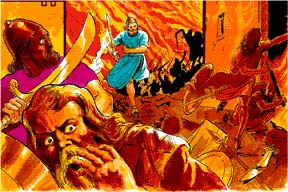Bishop Jammo ’s Claims Versus Historical Facts
William Warda
California
According to Zinda Magazine on 24 February 2005 Bishop Sarhad Jammo delivered a speech to his followers in San Diego perhaps a typical lecture by him and others intended to further alienate members of the Chaldean Church from their Assyrian heritage. Judging by the content of this speech it is no wonder that there is so much hostility by the member of the Chaldean Church toward their Assyrian ancestry and Assyrians in general. Christianity claims to be about, building bridges, promoting peace, cooperation and brotherly love, but judging by his speech bishop Sarhad Jammo has no interest in such noble ideas.
In an interview a year earlier bishop Sarhad admitted that for the last 30 years he has been thinking “of the necessity to fix political borders between Assyrians and Chaldeans..” Which means he had decided that we were not one people 30 years ago and the recent election results had nothing to do with it. In fact he and others did their best to discourage our people from voting.
He admitted that he was prevented to put his divisive plans in action by the late patriarch of the Chaldean church, “Mar Bedaweed I, who, in the year 2000, declared his being an Assyrian from an ethnic point of view and a Chaldean from the religious one." But obviously Mar Bedaweed was in no position to stop him from indoctrinating members of the Chaldean church against their Assyrian identity and Assyrians in general.
Sarhad Jammo wants to pretend that Mar Bedaweed was speaking only about his own Assyrian heritage and not the Chaldean Church which is not the case. In a 1974 interview with the Assyrian Star he said : ". Personally, my family became Chaldean only some 100 years ago, my grandfather Daweed was a Nestorian priest, and the same is true with all the rest of us ...we need to differentiate between nationality and Church, between church and politics ... the Chaldean title for us does not mean ethnicity or nationality,... True Assyrianism is an ethnicity and we all are Assyrian. We could be Assyrian ethnically, but we are Chaldeans religiously. We can not have our Church associated with ethnicity or nationality".[1] Bishop Sarhad himself is an obvious example of how the Chaldean church hides its Assyrian heritage. His proud Assyrian parents named him after the Assyrian king A-Sarhadon but he is not willing to honor their heritage. I was told that even his two sisters have patriotic Assyrian names.
After Mar Bedaweed died Sarhad Jammo began to put his plans into action. According to AINA, “In a memorandum dated May 10, 2003 from San Diego, “Bishop Sarhad along with Bishop Ibrahim Ibrahim, of Michigan, formally asserted a separate Chaldean ethnicity, rejecting a common political or nationalist purpose with Assyrians.” In september of the same year 19 Chaldean bishops including Sarhad Jammo, in Baghdad, in a letter to Mr. Paul Bremer, Iraq’s Civil Administrator, demanded separate rights for the Chaldeans whom they claimed to be a distinct ethnicity other than Assyrian and constitute 80% of the Iraqi Christian population.
In his San Diego speech bishop Sarhad presented several opinions based on false premises intended to prove that members of his Church are not ethnically related to other Christians of Iraq. Following are some of his assertions and false assumptions which have been refuted by this writer.
He said: “Assyrians, and Suryaye are all Suraye, meaning Christians. Suraya is not the name of people (nation); it is a religious term, he stressed. Let us not mix up between Suraya and Suryaya. We say "lishana d’ Sureth" (Syriac language), which means the language of the Christian people.”
The names Suraya, and Suryaya, Suryoyo, have been used by the Assyrians of the Church of the East, The Syrian Orthodox Church and the Chaldean Church in reference to their people and contrary to bishop Sarhad it does not mean Christian. He seems to be unaware that suraya and Suryaya are equivalent to the English Syrian and the Greek ‘Surios’ which according to the Greek and Roman historians it meant Assyrian and was in use five to six centuries before Christianity and ‘Syrian’ when applied to the christians of Mesopotamia does not mean citizen of Syria.
Herodotus in mid fifth century writing about the Assyrian troops in the Persian empire army stated: “While the Greeks call these people Syrians they are called Assyrians by the Barbarians.” meaning the Armenians and the Persians and even the inhabitants of the region west of Euphrates.
In fact While we have called ourselves Suraya, Suryaya and Athuraya Armenian have called us Asori meaning ‘Assyrian” since before christianity and during all the christian centuries. A chart by the Assyrialogist Parpola indicates that various Greek and Roman historians used ‘Syrian’ as an equivalent to Assyrian for the people of Mesopotamia before and after the christian era.[2]
According to the Nagshe Rostam inscription by the Persian king Darius listing the national types of the Persian Empire Assyrian is pronounced as follows: “Iyam Asuryah” i.e. “this is an Assyrian”. Very similar to the term “Surya ” a name Christian Assyrians have identified themselves by. Parpola indicates that from (930 to 600 B.C.) the term Asuraya was used by the ancient Assyrians themselves to identify their nation which Suraya seems to have derived from and is similar in meaning. [3]
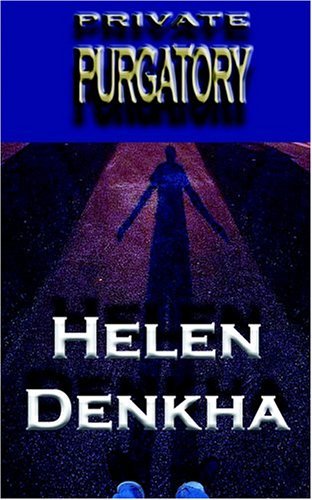 |
The Syriac name for Christian is Mshikhaya or christyana The second century Syriac writer Bardaisan informs us that Christians are called “(kristyônê) after the Messiah”. Persian documents of the fourth century AD refer to christians as ‘Kristiyan’.[4] The 11th century Syriac writer Abdisho Bar Brikha in the introduction to his “Paradise of Eden” refers to himself as “Allila Suryaya” i.e. obscure As(syrian) and “Mkhila ‘d Mshikhaye”, feeble of the Christians.5 He is clearly indicating that Suryaya and Mshikaya have two different meaning and since the first existed before Christianity it could not have meant Christian. We never call the Armenians who are Christians Suryaye even though we have lived side by side with them since before christianity. The terms Surit and Syriac and Suryani as we shall see have derived from Syrian short for Assyrian.
Sarhad Jammo continues to dismiss ‘Suryaya’ as an ethnic term.
He claims: “Suryan or Suryaya comes from Syria, period. Therefore, Suryaya cannot be a name of our nation..... I cannot say Suryaya or Suryani to reflect an ethnic group in Iraq.
We say we are one people; however, we must be careful of what we are saying. The Suryani people in Iraq are the people of Iraq; however, this name does not reflect any ethnic Iraqi group. The language does not prove anything.”
Bishop Sarhad again fails to see that ‘Suraya’ or ‘Suryaya’ have noting to do with Syria when applied to the christians of Mesopotamia. At no time Syria has ruled the region east of Euphrates. These terms as explained above have derived from the ancient ‘Asuraya’ which Parpola indicates that ancient Assyrians identified themselves by and the Greek corrupted form for Assyrian. The Armenians and the Persians name for our people is Asuri or Asori derived from Asur or Asor.
Bishop Sarhad Jammo continues: “The name Chaldean cannot be treated on equal footing with the name Suryaya or Suryani. The center of the Suryani people is Syria; therefore, there is a conflict when we try to equate Suryaya or Suryani with Chaldean.”
Chaldeans as applied to the members of the Chaldean church is nothing more than a religious identify which began in 1553. Before then and even now members of the Chaldean Church have used the name Suryaya to identify themselves with which historically has meant Assyrian. In mid 19th century Badger wrote: Even the most important [the oldest] “Chaldean community at Diarbekir could only boast of the name ‘Sooraya’ and ‘Nestoraya’.” [6] This means that 300 years after the establishment of the Chaldean church a majority of its members were not calling themselves Chaldeans.
As for ‘Suryani’ it is an abbreviation of the Persian ‘Asuriyan’ [Assyrians] with a possessive ‘I’ added to the end. Because of its Persian origin this name must have been in use before the Arab conquest. We need to note that Syria from the 7th century until world war one was known to the Arabs and other Moslems as “belad, al-Shum”. Only Europeans called it Syria because of Biblical influences. In the translation (C.961-976 AD) of “Latin History of Paulus Orosius” the Arab translator equates the Latin word "Assyri" [Assyrian] with the Arabic word "al-Suryaniyyun" and the word Assyria with "Suria".[7]
Bishop Sarhad also claims that our common language does not prove that we are one people. He explains:
“The language does not prove anything. The Americans speak English language; however, they kicked the British out. Language alone does not make a nation. His Grace continued to state: "Suryaya does not express Iraqi identity." We cannot create a block of people and say that Suryan and Chaldean are one nation … No … we cannot do that.”
We have already seen that Suryaya and Suryan have derived from Assyrian and members of his church have used those terms to identify themselves with. His analogy of Americans and the English relations can not apply to the Syriac speaking people. The United States was a country that was being ruled as a colony in a dictatorship manner from seven thousand miles away which exploited its resources and imposed its rule on its people. There is no such relationship between members of the Chaldean Church and other Christians of Iraq. They are one people with the same history, geography, language, culture, heritage, and the indigenous inhabitants of northern Mesopotamia divided only by religious affiliation and not ethnicity.
In the following statement Mar Sarhad contradicts his often repeated opinion that members of his church are not Assyrians
He says: “Now, let us come to the name Athuraya (Assyrian), the bishop continued. Athur is Iraq … Athur is our ancestors … our heritage … our pride. That is Athur … Ashur … yes.... However, an Iranian is not an Iraqi and an Iraqi is not an Iranian.”
If such is the case why does Bishop Sarhad want to erect political borders between Assyrians and members of the Chaldean Church? One has to wonder why he and his people refuse to acknowledge their Assyrian ancestry if as he agrees that: “Athur is our ancestors … our heritage … our pride”? In that case he should be teaching his people about their Assyrian heritage instead of promoting animosity and divisiveness based on who goes to what church.
While Sarhad Jammo previously contended that speaking a common Syriac language does not prove that Christians of Iraq are ethnically related he agrees that they have a common language but it is not the same language spoken by the Assyrians of urmia.
He says: “ ...If we examine the Suraye in Iraq, whether the mountaineers or plain people, we see that they understand each other's dialect. The grammar is the same. Meanwhile, in Urmia they have different grammar. When a Suraya speaks the Urmia dialect, the Suraya of Nineveh plain does not understand anything, and the opposite is true as well, meaning, when a Suraya of Nineveh plain speaks his dialect, the Suraya of Urmia does not understand. Therefore, we cannot say that we are all one umtha (nation).” By his logic Australians do not speak english because some times they use words that are not understood by the Americans
His intentions are to divide Assyrians between those who live in Iraq and those outside the country and to alienate them from each other based on his flowed reasoning. I am an Assyrian from Iran and have never lived in Iraq but in several occasions I have heard Sarhad Jammo speaking to the members of the Chaldean Church on video and a radio program but had no problem understanding him. In San diego several years ago during a convention of the ‘Assyrian American Federation’, I had a chance to apeak with several members of his church from Iraq. We had no problem communicating with each other. I have also a copy of a book published in Mosul in 1896 by the Dominicains Press titled: “Ktava d’Mattli Ta Eskulayee b’Leishana Swadaya” or ‘the book of tales for the students in the Vernacular Syriac Language’. I have no problem reading any part of this book which shows that the language spoken in Urmia is not much different from the one spoken by the members of the Chaldean Church, perhaps with slight dialect variation. It was this common language which allowed tens of thousands of Assyrians in Urmia to convert to Catholicism during the 19th and the 20th century and join the Chaldean Church which they considered as an Assyrian denomination.
In all countries people of different regions isolated from each other speak different dialects of the same language. Only in recent years because of Radio and T.V. influences such variations have become less noticeable. Anyone who has seen the “My Fair Lady” Movie made in 1960’s knows that it was about picking up a woman who spoke with an almost uncomprehensible dialect from a marketplace in London and refining her accent to the point that every one believed that she was a high class Londoner. Her practice line was: “The rain in spain falls mainly in the plain”.
John Maclean a prominent Syriac linguist who studied the various dialects spoken in the Plain of Nineveh, the mountains of Kurdistan and the plain Urmia at the end of the 19th century wrote: “The variations of the dialects is geographic; there are no differences of class among people, and all in the same place have more or less the same tongue. The examination of the peculiarities of speech in different districts would lead us to divide the language into four main divisions..” From Urmia to Algosh he lists: I- The Urmia Group - II. The Salamas Group - III, the Ashiret group; including Tiari, Tkhuma - Ashita and Mar Bishu. and IV, The Algosh dialect which also included Tilkief , Teleskof and other towns.
He writes: “It is possible that these classes represent separate migrations from the plains of Mesopotamia and Assyria.” He was able to establish a pattern of migration from the mountains of Kurdistan to the plain of Urmia. For example Assyrians living in villages near the Nazlu river had the closest dialect to the Assyrian tribes in the highlands of Kurdistan which means they were late comers. Those who had arrived before the 16th century had the most deteriorated dialect. [8] We need to add that the Algosh group must have been the original dialect and the other three were its extensions.[9] Maclean also wrote in the “town of Mosul Syriac almost entirely gives place to Arabic” and there are small differences between the Syriac spoken in Algosh and the “villages Telkief, Teleskof, and the rest...”10 One has to ask; why does Bishop Sarhad accepts the Arabic speaking members of his church as part of his nation but is unwilling to do the same with the Syriac speaking people in U
rmia only 150 miles away?
As if what he said before was not enough Sarhad Jammo further said: “One who is from Urmia has a continuous heritage of Iran; it is not related to Bet Nahrain (Mesopotamia).....with my respect to the Iranian people. They cannot say we are one nation.”
No one is asking Bishop Sarhad to consider himself Iranian. Every country has people of different ancestry including Iran and Iraq. The heritage of Syriac speaking people of Iraq is not the same as that of the Kurds, Arabs, and Turkemans living in that or other countries of the Middle East. By the same token the heritage of the Assyrians of Urmia has little in common with the culture and the ancestry of the Azari Turks, The Kurds and Persians of Iran. Assyrians of Iran who primarily survived in isolated villages speak the same language as that of the Plain of Nineveh, worship the same religion i.e. christianity and proudly consider themselves the descendants of the ancient Assyrians. It is well known that Assyrians have been often driven out of their homeland because of wars and persecutions and have settled in the neighboring regions. Not living in their ancestral homeland does not make them any less Assyrian.
It is unconscionable to question the heritage of the Assyrians of Urmia living only 150 miles from Nineveh but falsely claiming to be Chaldeans living in Assyria. Before world war one a chain of Assyrian communities leading from the plain of Nineveh to Urmia dotted the mountains between them, such as Tiari, Thumi, Diza, ashita, Mar Bishu, Barwar, Jillu, Tar Gawar, Mar Gawar, Salamas. No such chain of communities were connecting the Plain of Nineveh to Chaldea 500 miles to the south. Only during the last two centuries Christians of the northern Iraq have lived in southern cities of the country. Mandeans were the only Christians who have lived continuously in the homeland of the ancient Chaldean and are still there. They are the true descendants of the ancient Babylonians and Chaldeans.
During the last two years more than fifty thousand christians from Iraq were forced to flee to Syria and Jordan because of terrorism. While some may return the rest may choose to remain. It is unconscionable to claim that these people few generations from now can not be considered related to the Christians of Iraq even if they preserve their culture and heritage. Most members of the Syrian Orthodox Church were massacred during world war one and the rest were driven out into Syria but that does not wipe out their history in their former homeland. During world war one the Assyrians of Kurdistan were massacred, the survivors fled to Urmia, a considerable number of the Assyrians from Urmia fled to Russia where they still live. In 1918 Assyrians of Kurdistan and urmia were driven out of Iran into Iraq. They had come a full circle to where they had started from. Similar exiles were the rule rather than exceptions during most centuries.
While in a previous paragraph Bishop Sarhad asserted that; “Athur is our ancestors … our heritage … our pride. That is Athur … Ashur … yes.” he goes on to say:
“we have Suraye living in Telkepe, Alqosh, Karamlesh, Batnaya and these villages are next to Nineveh in the heart of Assyria. Why do they call themselves Chaldeans?
The answer is very simple. For the last two hundred some years bishops and priests like Sarhad Jammo have falsely taught them that they are Chaldeans and not Assyrians and warning them that if they call themselves Assyrians they will be considered Nestorians. During the last two years many Assyrians were driven out of the Chaldean Church in Los Angeles because they considered themselves and their church ethnically Assyrian.
Bishop Sarhad’s answer to his own question was: “ living in Nineveh Plain would travel to Mosul and pass by Nineveh and Ashurbanipal palace; however, when you ask them what they are, they say that they are Chaldeans. Why, because they return to their origin, to their center that was Babylon and the last dynasty of Chaldeans.”
That is an absurd answer. The history of the Chaldean Church is well documented. Those who established it and joined it were of Assyrian ancestry. It was clergies like himself who indoctrinated them to believe that Chaldean is not only the name of their church also their national identity. That they were the descendants of the Chaldeans and not Assyrians. In the process they have done them a great disservice by alienating them against their true identity and giving them another which is impossible to justify historically , Geographically and religiously. There was no Christian community in Mesopotamia which called itself Chaldean before 1553. One can not falsify history and expect others to believe it. Such misinformation always collides with irrefutable historical facts. Eager to have members of their church reject their Assyrian ancestry Sarhad Jammo and others have turned a great christian denomination into a an antagonistic, and, divisive movement which prevents co operation between a people who share the same homeland, heritage, religion [Christianity], culture, language, history and destiny. In doing so they have undermined the survival of the christians of Iraq including those belonging to their own Church.
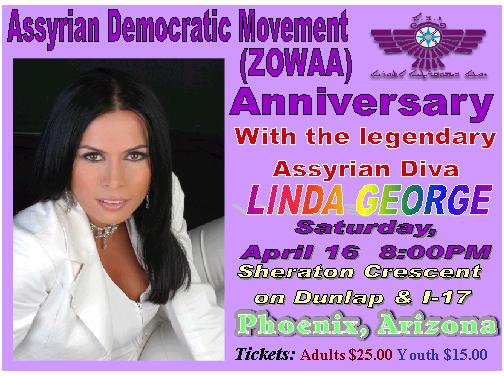 Bishop Sarhad and others take pride in the fact that Chaldeans represent 75 to 80 percent of the Christian population in Iraq but they do not want to explain how it happened. They also don’t want to mention.the role of the Vatican, its missionaries, the diplomatic and financial help from the French government which forced the other two Christian denominations into submission by enticing or forcing their members to join the Chaldean church. Bishop Sarhad and others take pride in the fact that Chaldeans represent 75 to 80 percent of the Christian population in Iraq but they do not want to explain how it happened. They also don’t want to mention.the role of the Vatican, its missionaries, the diplomatic and financial help from the French government which forced the other two Christian denominations into submission by enticing or forcing their members to join the Chaldean church.
Henry Lobdel who about the end of the 1800 spent a considerable amount of time in Mosul, Algosh and other towns of the Plain of Nineveh wrote: "Patriarch of the valley [Mosul and Nineveh] had gone over to the Pope and taken most of the people with him. The Papists [Chaldeans] had possession of the churches and the schools, the convents the revenues all the ecclesiastical property, so long as the fugitives adhered to the faith of their fathers [Church of the East] they could expect neither charity nor justice. They were denied the needful food, raiment, and shelter. Nay they were even refused burial in the churches that were properly their own. But if they would only turn Papists, not only charity but bribes were distributed with a liberal hand, "Forty thousand piasters of French gold are said to have aided the arguments employed to convince them [ to change] the identity of that church [Chaldean] with their own."[11] Faced with such discrimination also persecution by the Vall
i of Mosul instigated by the Catholic missionaries to force them into submission those who refused to join the Chaldean Church had no choice but to flee into the mountains.[12]
Those who became Catholic were gradually convinced that they were chaldeans not only religiously also ethnically. Anyone who dared to call himself Assyrian would be accused of being Nestorian. It is no wonder that there were no members of the Church of the East living in the plain of Nineveh before 1918, though before the mid 18th century the region was the power center of that denomination. From 1830 to the end of the world war one the Christian inhabitants of the Plain of Nineveh consisted of members of the Chaldean Church and Syrian Orthodox Church, only for a brief period members of the Church of the East who had fled the massacres of Bader Khan in the mountains were allowed to stay in Mosul. While going to another church changes a person’s religious beliefs it does not alter his/her ancestry or nationality.
Chaldean means nothing more than belonging to the Chaldean church. According to all sources including the Vatican. When Sulagga arrived in Rome he was first proclaimed patriarch of "Mosul and Athur" (Assyria) on Feb. 20, 1553 by Pope Julius III.[13] Roman documents also refer to Sulagga as the elected patriarch of "the Assyrian Nation".[14] This is a testimony to the fact that those who lived in the plain of Nineveh were considered Assyrians. The Carmelites in their Chronicle assert that Sulagga was proclaimed "Patriarch of the Eastern Assyrians" but on April 19, 1553 he was redefined as the "Patriarch of the Chaldeans".[15]
It was logical for the Roman Catholic Church to call the Patriarch of the newly established church by a name other than Assyrian because the inhabitant of the Plain of Nineveh were already known as Assyrians and were predominantly members of the Nestorian church. The name Chaldean was chosen for the new church and its followers to distinguish them from the other two denominations. They were called Chaldean to describe their religious affiliation just as members of the Church of the East were called Nestorians and those of the Syrian Orthodox Church were called Jabobites. The name Chaldean for a Christian Church could be justified because by the Old Testament claim that Abraham the father of the Jewish and consequently Christian religion lived in the so-called Ur of Chaldee in Mesopotamia, but it does not make those who attend it ethnically Chaldeans. This name was clearly chosen for religious reasons and not ethnic identity. It is unfortunate that it has led to such historical confusions.
It took some time before the name Chaldean was used as substitute for Assyrian. After Sulagga's death there was an attempt to unite the two factions of the Church. Mar Obdisho Bar Yohanan Bet Maron of Jezireh succeeded Sulagga. He was unable to travel to Rome until 1561. In the following year he traveled there. On February 19, 1562, Cardinal Amolis in a codex to the committee of the cardinals in Tredando introduced Sulagga's successor Patriarch Obdisho Bar Yohanan Bet Maron (1555 -1570) as "..The Patriarch of the Assyrians who has been elected by the clergies and approved by their people".[16]
Obdisho unlike Sulagga resided in Sarit. In letters from India to the Pope Mar Abraham a bishop of the newly formed Chaldean faction in that country continued to refer to Obdisho as the "Patriarch of the Assyrians" or "Patriarch of Assyria" . (Venerabili Fratri Abdisu Patriarchae Assyriorum sive de Muzal Pius Papa Quartus (1)". and "Abdisu Patriarca d' Assiria".) [17]
Notes:
- Assyrian Star interview;/ No. 5, September-October issue 1974.
- Journal of the Assyrian Academic Studies, Vol 18, N0. 2, 2004, pp 5-49.
- Parpola JAAS.
- Josef Wiesehofer translated by Azizeh Azodi, “Ancient Persia from 550 BC to 650 AD p. 199.
- Yoab Benjamin, “ A Comparative Study of ‘Abdisho’s Paradise of Eden and the Makamat of al-Hariri”, Journal of the Assyrian Academic Society, Vol. VIII, NO.1, 1994 p.57.
- Hurmuzd Rassam, Assur and the Land of Nimrud, Cincinnati; Curts & Jennings, 1897 pp.. 173-74.
- Abdel Rahman Badawi Ed. "Orosius, Tarikh Al 'Alam”, Al Muassasa al Ararabiyya lil Dirasat wal Nashr, Beirut, First Edition, 1982.as quoted by Fred Aprim in his Assyrians: the Continuous Saga.
- Arian Ishaya, “B. Nikitine and the Assyrians”, JAAS, Vol. VII, No. 1 spring 1993, p. 54.
- Arthur John Maclean, “ Grammar of Vernacular Syriac Spoken by the Eastern Syrians of Kurdistan-Northwest persia and the Plain of Mosul”, Cambridge University Press 1985 p. XIII.
- ibid. p-XV.
- Rev. w. S. Tayler, “Memoir of Rev. Henry Lobdel (Mission of the American Board at Mosul)”, 1895 p. 166.
- See Catholicism in the Plain of Nineveh in the middle of the page at: http://www.chaldeansonline.net/church.html)
- Rabban, "Chaldean Rite", Catholic Encyclopedia, 1967, Vol. III, pp.427-428.
- Xavier Koodapuzha, "Faith and Communion in the Indian Church of Saint Thomas Christians, Oriental Institute of Religious Studies, Kerala, India, p.59.
- A Chronicle of the Carmelites in Persia and the Papal Mission of the XVII and XVIII Centuries, Vol. I. (London: Eyre & Spottiswoode, 1939.
- Dr. Sarhad Jammo, "The Two Branches of Eastern Church," Bayn-Al-Nahrayn 95/96, Baghdad 1996 p. 196.
- Sequens expositio excerpta est ex Archivio Vaticano, Archivio de Castello, Armad VII, cap. 5. N, IX) also (Ex Archivio Vaticano Secreto, Archiv. de Castello, Armad. VII, Caps. V. N. 9)
The Book of Esther
David Gavary
California
The Book of Esther is a very curious story to find in the Bible. It does not mention the name of God once; it doesn't even use the mere title God once. It never mentions a prayer to God for help or thanksgiving to God for deliverance. It is completely and brutally a materialistic story of murder and robbery. So how did it get into the Bible?
Let us summarize the stor of Esther. The scene is laid in the Persian Empire, after the overthrow of Babylon by Medo-Persian forces, not by war, but a revolt by the Jewish Babylonian citizens when they opened the gates for Cyrus II who himself was a Jewish Babylonian citizen at one time. Earlier Persia swallowed up Media and became the Persian Empire.
The story of Esther opens with the comment that Ahasuerus gave a six month long feast, or more properly a debauch for his nobles. Now, Ahasuerus is not the name of any person, literally. It means the mighty one, and in English usage it would correspond to "his majesty." There has been considerable speculation as to which Persian king this is related to, and there is nothing whatsoever in either the Book of Esther or written history to guide us. Judging by the approximate time it was supposed to have occurred, some have guessed that this Persian king might have been Xerxes (Persian Khashayarshah). Which is downright forgery and falsification because from what we know of Xerxes the events of the Book of Esther could not take place during his reign.
The story mentions how plentiful the wine supply was at this six-month long feast and at the end the king gave a lesser party of one week for less important people who worked at the palace.
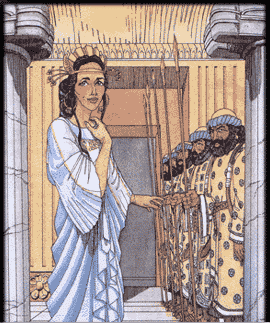 |
While drunk, he commanded that his queen, Vashti, be brought out and shown to the people, that they could see her beauty. She had to be brought out naked, so they could see her physical beauty. Well, she, being a dignified person, refused to do this. So the drunken king called a council of seven of his drunken nobles to decide what should be done to punish a queen who refused to do what her husband told her to do. And, by the way, you cannot find a Persian name among all these nobles; they are all Semitic or Babylonian names. The noblemen say something to this effect: "This is more serious than you realize, it is not only that she defied you, but if you let her get away with this, then our wives will also refuse to obey. So depose her as a queen, fire her and get another queen in her place." What they decided was the best a group of drunken people could decide at the time, so they went ahead with that decision, and the king deposes his queen.
Then the most beautiful virgins of the kingdom were brought in and placed in his harem. They were to be there a year before he inspected any of them, to see if any of them was sufficiently attractive to become the queen. During that time, if one was too fat, they could put her on a diet and slim her down, if she was too thin, they could feed her and build her up, so that whenever she got to see the king, she was in her most attractive condition.
The story goes on to say that one Mordecai (Mordekhai), a Jew who lived in the king's palace, had brought up his cousin as, ostensibly, his daughter. In the English translation, they give her the name of Esther. In the original, her name is Hadassah. Have you read in the society columns of your newspapers about the Jewish women's society of Hadassah? That's Hebrew equivalent of what is called Esther in the Bible.
Esther or Hadassah was among the beautiful virgins for a year before she gets to see the king. Now during all this time, although this was an oriental country with oriental customs, Mordecai gets to visit the harem every day to speak with Esther, according to the Book.
Mordecai was a well known Jew. Esther was raised as his daughter and every day while in the king's harem, this Jew - supposedly her father, actually her cousin or maybe even her uncle- came to talk with her, and nobody suspected that she too was a Jew. In the mean time, Mordecai discovered that some people were conspiring to assassinate the king. So he tells Esther about this.
Here again we read about another curious thing. According to the Book, even the queen herself could not send any message to king, no matter how important. She would have been killed if she had done so. She had to wait until such time as the king chose to send for her, and then, if permitted her to speak. Otherwise she would get killed.
During the year she was in the harem while she knew about the plot to murder the king, she had to keep silent.
Eventually, the king chose her as his queen, and she then proceeds to tell him about the assassination plot. The king has the conspirators hanged. But remember now that the king knew of this, because he is the one who ordered the hanging of the conspirators, and he ordered the official record to be made that Mordecai was the one who had given the information that enabled him to hang the conspirators before they could get around to assassinating him.
The book does not explain why they were so negligent in letting it drift almost a year before Esther gets a chance to warn the king, but, they hadn't "bumped him up" in that time. It says that one Haman had been made prime minister above all the princes. Now he was a very wealthy man. It says all year long "they cast Pur, that is, the lot, before Haman from day to day, and month to month." Casting lots, in other words, dice.
This was the early progenitor of Las Vegas. And since in all gambling games, the odds are weighed in favor of the house, and quite often helped along a little bit by sundry scientific methods, Haman became very, very wealthy, in addition to being second in power only to the king in the kingdom.
Now Mordecai, a Jew, refused to bow to Haman, which enraged Haman greatly. This was an insult to his dignity, so he began plotting revenge. He went to the king and told him that the Jews were a people scattered abroad and dispersed among the people in all provinces of the kingdom and it said the kingdom was divided into 127 provinces. And here these wicked Jews scattered throughout the kingdom.
So Haman offered to pay the king ten thousand talents of silver, if the king would grant him the privilege of massacring the Jews and stealing whatever property they might have. A talent was almost 65 pounds in weight. So 65 times 10,000 would be 650,000 pounds of silver, which worked out as roughly equal to about 20 million dollars, and then, when you translate that into the greater purchasing power of money in that day, I wouldn't be surprised if it would be equivalent of offering the king 20 billion dollars in terms of today's money values, for murdering the Jews and taking their property.
Contrary to the actions of any oriental monarch that I have ever read or heard about, the king turned down the offer of the billions of dollars and says "just go ahead and kill them." So he issued an edict which he ordered published in all the provinces of the kingdom, stating that on the 13th day of the month Adar the people should kill the Jews in his kingdom and take their property.
If anybody was still in doubt that Mordecai was a Jew, all doubt was dispensed with. Mordecai went into public mourning, fasting and wearing sackcloth, as did the rest of the Jews when they heard that they were going to be slaughtered. Now the Book never says that anyone of them prayed to be delivered from this massacre. Mordecai sent word to Esther, who by this time was the queen, that unless she could get the king to change his edict, that she like the other Jews would be killed. So she agreed to try to persuade the king to change his mind. The new queen, Esther, known by all who knew her as having been raised as the daughter of Mordecai, now doubly advertised her Jewishness by also dressing in sackcloth and fasting and mourning, and compelling all her maidservants to do likewise. Unless any of the people of the kingdom were in a state of total unconsciousness, how they could have avoided knowing that she and Mordecai were Jews is not explained.
So Esther decided how to do this, how she would change the king's mind. She gave two great banquets some little time apart, and she had the king and Haman invited to attend these two banquets, which they did attend both the first one as well as the second. The king was so pleased that he told her "I will give you anything, whatever you ask." But there was no wish spoken, not until the second banquet.
Between these two banquets Mordecai further insulted and angered Haman. So Haman is in furious rage. He has already received the authority from the king to kill every Jew in the kingdom. He is second in command of the whole kingdom and therefore able to do this on his own, and he has specific orders from the king, published as official law and he knows that Mordecai is a Jew.
But with all this anger he doesn't do a thing about it. In the anticipation of murdering the Jews he builds high gallows on which Mordecai can be hanged, yet, he waits to ask the king to do that. The Book says that somebody reminds the king that Mordecai was the man who reported the assassination plot and saved the king's life, and no reward has been given him for this, so he decides, yes, there should be a reward for Mordecai.
So Haman the prime minister comes in about this time and the king says:"Haman what should be done for the man whom the king desires especially to honor?" Haman thinks to himself "Well, that must be me, who else could it be?" So Haman answered "the thing to do is dress him in royal robes, have him ride upon your own horse, bring him through the streets, parade him before the people with heralds there blowing trumpets and telling the people, this is the man the king delights to honor."
Then the king says "Well, that sounds like a good idea. Haman you do that for Mordecai." That rather stuns Haman, he has waited too long to get Mordecai put away. Now he has to fall before him.
How anybody could have had any question about whether Mordecai was a Jew or not, is not explained. But at the second banquet Haman rather misbehaves and incurs the king's wrath. Esther reveals to king, what everybody in all of Persia had known by that time, that she is a Jew, and she reminds the king that the official proclamation (the king's edict) has gone out to murder every Jews in the kingdom.
The king is astonished to hear that any of this has happened; he doesn't know anything about it. Well, he orders Haman his closest and most loyal of his subjects to be hanged, and Haman is hanged on the big high gallows he had prepared for Mordecai.
Then the king tells Esther that he will set aside the decree, and he says, "You write a new decree, anything, and whatever that you want, and seal it with my seal, so it is official. Anything you want, send it out."
This was the same Medo-Persian empire which conquered Babylon, and in the early days, the prophet Daniel was still alive in Babylon. Jesus Christ himself spoke of him as "Daniel the prophet." As is written in the Bible, some of the pagans in Babylon wanted to get rid of Daniel, so they went to the Persian king and said "We would like you to make a decree that, for a month to come, any man who offers any prayer to any god except you, oh king, shall be killed." Well, that flattered the king. All the people would have to pray to him as a god. So he issues the decree. The pagans watched Daniel for a few days and they caught him praying to Yahweh, the Biblical God. Then they went back to the king and reported Daniel's praying to his God. Under the law, he had to be killed and thrown to the lions.
The Bible says that the king liked Daniel very much, and he tried to find some way to get around this, (A king who has the absolute power and doesn't need to explain himself) and relieve Daniel of the penalty. But the pagans reminded the king that the law of the Medes and Persians could not be altered. Now it doesn't mean that they couldn't ever make a new law, but what it meant was that so far as the law which had been passed, it could not be altered retroactively. Then the king, squirming around and trying to get out of it, found he couldn't.
When Esther asks the king to set aside the law that was made, he does so and tells her to write any kind of decree she wants, sign it with his seal and makes it official, changing the law of the Medes and Persians. So she wrote a new decree which says that the Jews are hereby authorized and commanded "to destroy, to slay, and to cause to perish, all the power of the people and province that would assault them, both children and women and to take the spoil of them for a prey."
So the Book of Esther goes on to say many of the people of the land became Jews, for fear of the Jews. "And all the deputies, and officers of the king, helped the Jews, because the fear of Mordecai fell upon them" (Esther 8:11)...Because Mordecai had been appointed prime minister now, in place of Haman.(Esther 9:3)
In due time the 13th day of the month Adar arrived and the Jews began massacring the Persians, who, for some reason or other, put up no resistance. Not only out in the various towns of the province, but in the king's palace itself, the Jews came in, armed with swords, and raged through the corridors and rooms of the palace, butchering the king's servants in the king's own palace. And the first day, in the palace alone, they slaughtered 500 of the king's officers and servants in his palace.
So at the end of this first day, the king finds out that all this commotion had gone on in the palace and 500 of his own officers and servants had been killed, and he expresses his delight, how fine this was, and asks Esther, "Well, how is the slaughter going on in the provinces?"
She tells him, "Fine, blood is flowing in rivers."
-"Well, what else would you like?"
-"I would like to have another day of slaughter ordered, the 14th of Adar, tomorrow."
-"Fine, that is the way it is to be."
So on the 14th day of Adar, the Jews massacred 300 more of the king's officers and servants, in his own palace, that is 800 of his staff who have been slaughtered in his own palace. And they slaughtered other people throughout the kingdom to the number of at least 75 thousand people that the Jews have slaughtered and stolen all their property. So the Book says that the 14th day of Adar was made the Feast of Purim.
Would even a ten-year-old child be so feeble-minded that he could believe there was any element of truth in this story? Even if he didn't know ancient history, even if he didn't know oriental customs, could he be duped by anything as absurd as this? Yet we are told in our temples, churches, or masques to believe this, because it is in the Bible.
Because of the time it was written and because of the circumstances of its origin and because of the many discrepancies in it, such as I have mentioned, this book was not accepted among the Jews for somewhere around two-and-a-half to three centuries.
When it was written, it cannot be fixed with exactness. It is found in a copy of the Septuagint; that is the translation of the Old Testament into Greek which was begun, roughly, around 300 B.C. in Alexandria. And it is found in a copy of the Septuagint which cannot be dated earlier than about 160 B.C. But all through the rest of the B.C. period, better than a century and a half, and for practically the first century A.D., no Jew would accept this fable as being inspired scripture. It was well known work of fiction.
As I wrote earlier, nowhere in it, does it mention God, nowhere does it speak of prayer for deliverance or prayer of thanksgiving.
At a later time, the Book of Esther had been in existence two centuries at least, some of the Alexandrian Jews wrote that you will find it in some copies, a part that is not in most of our Bibles. They wrote a last few paragraphs, telling how the Jews had offered prayers of thanksgiving to God for their deliverance, and for the loot they stole. Now do you think that even the Jews would have dared to add another chapter to Isaiah or Jeremiah? No.
Remember that all through this period the scribes were so careful in copying the manuscripts of the Old Testament, on every line they counted the number of words and then they counted the number of letters on that line. And when they made a new copy, they checked it, did it have so many words containing so many letters on that line. They did this to make sure that there would not be inadvertent errors in the copying. But here they add what someone might say is practically a last chapter to the Book of Esther, showing that the Jews themselves did not regard it at that time as being Holy Scripture. This went on until about the end of the first century A.D.
The Jewish rascality became so intolerable that the Romans couldn't put up with it any longer, and the Roman general in charge of Syria and Palestine marched with his armies to capture Jerusalem. The Jews shut the gates on him, so he threw his army around the city, in a siege ring. But the Emperor in Rome died at this time and the conquering general's army offers this to their commander: "You are the best qualified for Emperor, and if necessary we the army will make you emperor." So the Roman general drops the siege of Jerusalem and hurried home. He is made emperor.
His son Titus resumes the siege which lasts about a year, and in A.D. 70 the Romans capture Jerusalem. All the details could be found, written up in a great length in the writings of Josephus: "The Antiquities of the Jews" and "The Wars of the Jews."
When the Roman army comes in, the people from the country and all the smaller cities that couldn't be defended, fled into Jerusalem, which had massive fortification and could possibly be defended, so someone might say that all the Jews in Palestine were cooped up in Jerusalem. During the siege they engaged in savage fighting among themselves; more of them were killed in their own fighting, in Jerusalem, than were killed by Romans. But their total losses, from their own internal fighting, from battle losses against the Romans, from famine and from pestilence, were about a million. The rest of them were captured by the Romans.
The Romans sold some of these Jews to slave traders and drove some of them out of Palestine, and forbade them to return under the penalty of death. And a great bulk of them moved on north into huge city which was known then as Byzantium and later became Constantinople (today's Istanbul). The ones who didn't care or were uninformed, joined their natural kin (the Assyrians) in where Iraq is located now; the informed ones left for Persia and some all the way to India.
After the fall of Rome, some of the Rabbis who were allowed to stay in Jerusalem, began saying "Well, this Book of Esther which talks about Jews murdering thousands of people, and stealing all their property, is our kind of scripture." Around 100 A.D. was the first time that any Jew started taking the Book of Esther seriously. In the Talmud you will find that Rabbi Simeon Ben Lachish, (as some Assyrians have a last name as Lachin) who lived about 300 A.D. says "The Book of Esther ranks next to the law in holiness and importance." And the great Rabbi Maimonides, who lived during the Middle Ages, said this: "Although the prophets will pass away when Messiah comes, the Book of Esther and the Law will remain."
If we look up the Book of Esther in the Jewish Encyclopedia, we will find that the Book is not taken seriously, and I quote word-for-word from the Jewish
Encyclopedia: "The Jews well-known skill in transforming and enriching traditional narratives was applied to the Book of Esther."
Now let us see what we can find out when we analyze this. First of all, remember that the name which has been Anglicized into Esther was Hadassah. Where does it come from?
It is the Babylonian Hadashatu, literally means the bride, which was the name of a Babylonian pagan goddess. No doubt the Assyrians, the historians, and whoever is acquainted with Mesopotamian history knows about Ishtar who was the Babylonian goddess of sexual intercourse, (later adopted by Romans as Venus) and the Syrian form or Aramaic of Ishtar was Esther. Good honest scripture? No! And that ought to be a giveaway in itself. But let us look further.
"Mordecai" is not a Hebrew name at all, it is a Grecianized (Greek) form of the name of a Babylonian god. This Babylonian god is mentioned in Bible and history books as well, as Marduk and in Aramaic as Merodach, which the Greeks called Mordecai. In the Bible, Esther is known as niece and sometimes as cousin to Mordecai, and in Babylonian history Marduk and Ishtar were also cousins.
Now what about Haman? After the pronunciation very slightly from Haman to Hooman or Hamoon we have the name of a Persian pagan god. The king's wife, Vashti, was the name of a Persian goddess. The name of Haman's wife, Zeresh, is a slight corruption of Kerisha, which is the name of another Persian goddess.
So the whole story of the Book of Esther is a slight change, an embroidering of a Babylonian story about a conflict between Babylonian gods and Persian gods. Remember the Jewish Encyclopedia says, "The Jews' well-known skill in transforming and enriching traditional narratives was applied to the Book of Esther."
Now let us look at it again.
The Book of Esther tells us the kingdom was divided into 127 provinces; but all the historical records show there were 20 provinces, no more. The Book of Esther says that the Jews were scattered throughout all the provinces of the kingdom. Now this was not true during the period of the Persian Empire.
Alexander the Great on his great world conquering expedition across western Asia, overthrew the Persian empire. Alexander started in 331 B.C. and his whole period, from then on to the end of his life, was between eleven to twelve years; Alexander died at the end of that period and his kingdom was broken up into four pieces, with each of his four principal generals taking over part of the kingdom. So when the Greek period started, with Persia and Babylon governed by this Macedonian-Greek general and his descendants, during that period, it happened and it is true, some scattering of the remaining Jews who had not come home from Babylon, back to Palestine.
About 536 B.C. the Medo-Persians with the help of Jewish Babylonian citizens overthrew the Babylonian government. So the Persian government lasted roughly from 535 B.C. to 320-318 B.C. a little over 200 years. In that entire period, it was not true that the Jews were scattered throughout the provinces. The Macedonian-Grecian period of rule lasted until Rome took over, and remember the first appearance of the Book of Esther that we can trace is not earlier than 160 B.C. The language is changed too much in the meantime, all other languages, while they were living languages, have undergone that same type of change.
The approximate periods, say, within a century one way or the other, the approximate period of writing ancient books can be determined by the way the language is used, by the vocabulary that is used. And the Hebrew in the book of Esther is at least as late as anything in the Old Testament, as late as or even later than the Book of Malachi. It shows strong Aramaic tendencies. Into about the last century B.C., Aramaic was taking over, in place of Hebrew, as the commonly used language in Palestine. And also Greek influences are very common in it. It was written definitely during the Greek period.
When Alexander died his empire was broken up; one general took over Persia and Babylon, but another took over Syria and Palestine. So it was during that period of Greek rule in Palestine that the Book of Esther was written. Another curious thing: of all the people mentioned in the Book of Esther, not one of them is mentioned in any known historical record, and not one of them is mentioned in any other book of the Bible.
Going back to the language of the Book of Esther, there are a great many words that are not used anywhere in the Bible, outside of Esther; but they are Rabbinical words that are found to be commonly used in the Talmud.
None of the names of the people who are supposedly nobles of the Persian kingdom is Persian. They are all Babylonian names.
Some have speculated that the king mentioned might have been Xerxes on this basis: that Xerxes was a man of reckless and irresponsible disposition, even for an oriental monarch, and therefore he might perhaps have been the kind of a man to weathervane in every direction. But history records first of all, that his queen was named Amentris, not Vashti. History does not record she was ever deposed; and the best historical records on the subject, by the Greek historian, Herodotus, records that by Persian law the king could choose a wife only from among the seven noblest families of the Persian nation; not a Jew.
Haman's long toleration of Mordecai's insults was something that is never common in oriental, either in the past or now. In Babylonian pagan lore the 13th day of the month Adar was unlucky; the 14th day, however, was a lucky day. So the unlucky day for the Jews, when they were to be massacred, was changed; and on their lucky 14th day, they completed the massacre of the Persians.
Now we see this curious fairy-tale like many tales fable in the Bible today. How and when did it get there? What was the attitude of the Christian church when they were seventeen to nineteen centuries nearer that time, than they are today?
There was no early Christian church that ever accepted the Book of Esther.
The Syrian Christians rejected it. The once very extensive Christian sect, the Nestorians, never read it in their Old Testament. One of the early Christian writers, Melito, writing about 170 A.D. does not list it among the list of books which he said were accepted as Scripture. Oregen, writing about 225 A.D. does not mention it among the books accepted by the Christians as Scripture in his day. For centuries, the Greek Christian church rejected it.
The Catholic church adopted as the Latin translation of the Bible by Jerome as its official Bible. And when Jerome was undertaking to find what books were to be accepted as authentic for the Old Testament, he said, "Well, what do the Jews accept? That is the primary standard." And that wasn't far from 400 A.D. when Jerome did this. By that time of course the Jews were whooping it up with utmost enthusiasm, for the Book of Esther as being the most authentic of all the books in scripture. It told about Jews murdering Persians and robbing them. So Jerome put the Book of Esther, translated into Latin, into his Bible, and the Catholic Church accepted it.
How do the Protestants have it in their Bible? Well it has been known that for many centuries the Catholic church, the Roman Catholic church, was also the church in England, and when they finally split, it was over the high moral principle of whether a divorce should be granted to King Henry. The Church of England, the Episcopal Church, decided that King Henry should be granted a divorce and the Roman Catholic Church would not grant it. So that was the high moral basis for the Reformation in England. It did not have the basis of the Reformation under Martin Luther which was on matters of principle and doctrine.
Up to this time, the Church of England differed from the Roman Catholic Church on just two points: first of all, they would grant King Henry the divorce, which the Roman Catholic Church would not. And secondly, they did not recognize the bishop of Rome as having any more authority than any other bishop. Aside from that, their ritual was the same.
Like the Catholic Church, the Church of England believed that the people who came to church should not be allowed, ever to find out what was in the Bible; because, if they ever found out, they would learn the priest were not telling them the truth. So the Bible was kept in Latin, which the priests could read, and none but a very few scholars among the people were able to read Latin. When finally the real Reformation began developing in England, to the point where English translations began to be made, the Church of England burned to death several of the early English translators. This was heresy; they were printing the Bible in English. Finally, it was done.
What Bible did they have to work with? They had the Latin Bible that their Church used, plus a few manuscripts in Greek and a very few Hebrew, in some of the monasteries. The Book of Esther, having first gotten into the canon of accepted books through Jerome and the Catholic Church, roughly about 400 A.D., became part of the Latin Bible and continued in it, down to the time when the Protestant churches split off from the Church of Rome.
Now I think you will agree with me that the Book of Esther does not belong in your Bible.
Lately, some Persian Jewish organization published an expensive large coffee table book, which contains some very much rare and useful information regarding the community of Persian Jews from the time of their liberation from Babylon by King Cyrus (in Aramaic Kourosh) to their Golden ages during Mohammad Reza Shah, the last Persian monarch. The book is titled "The Children of Esther" a title which sparked my interest and curiosity to investigate the Book of Esther.
|


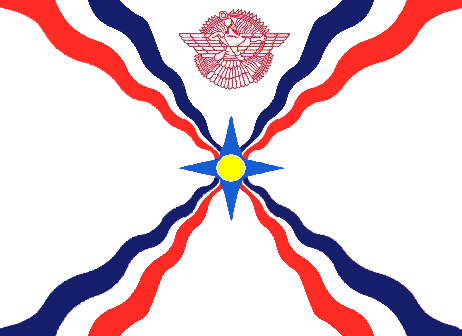
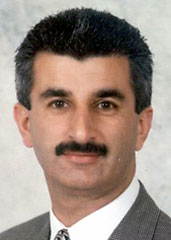
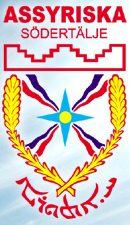
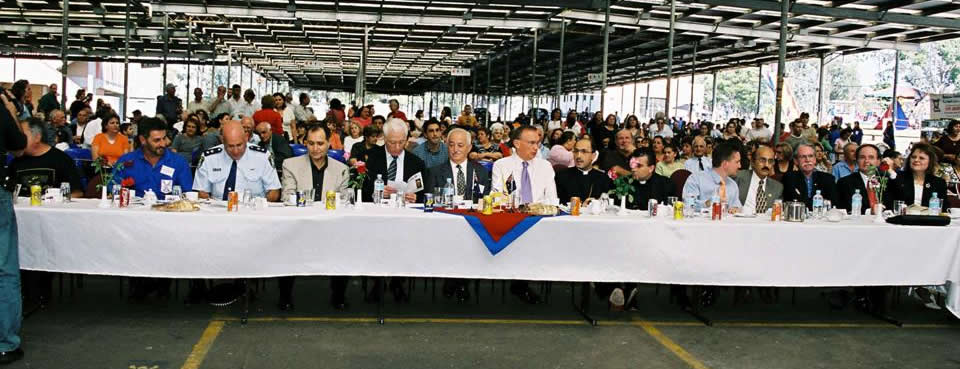
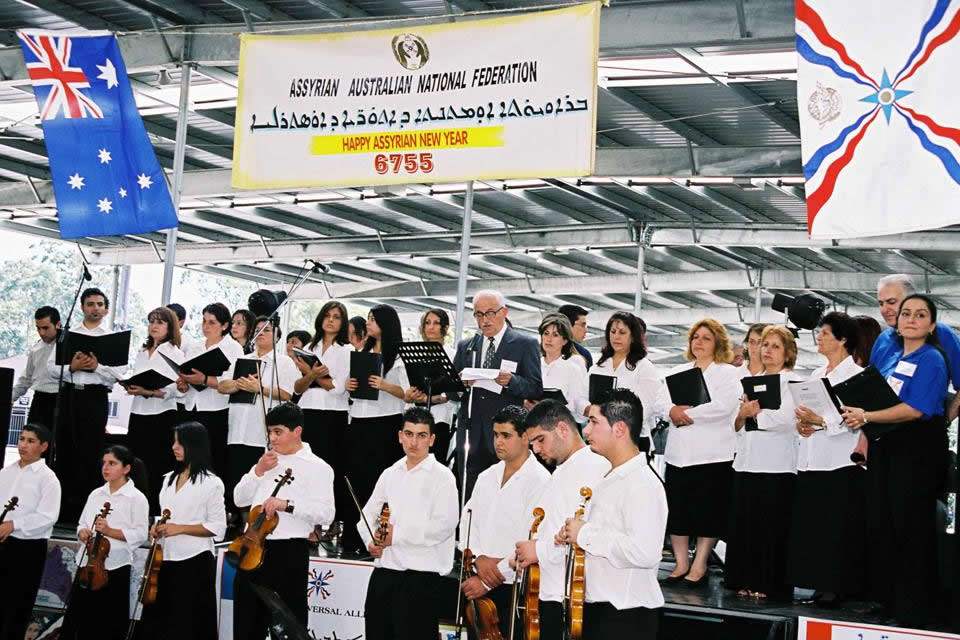

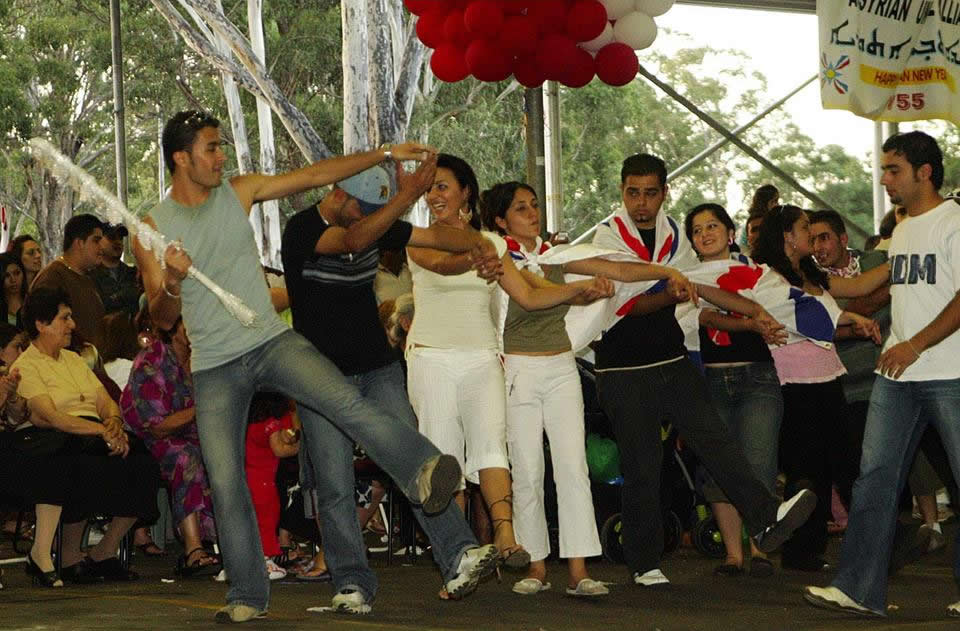
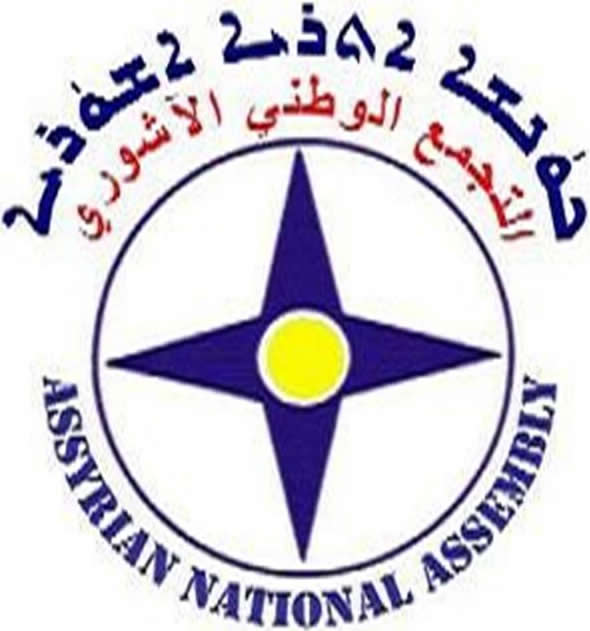
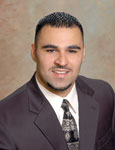


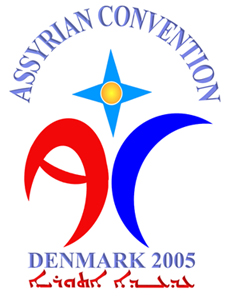


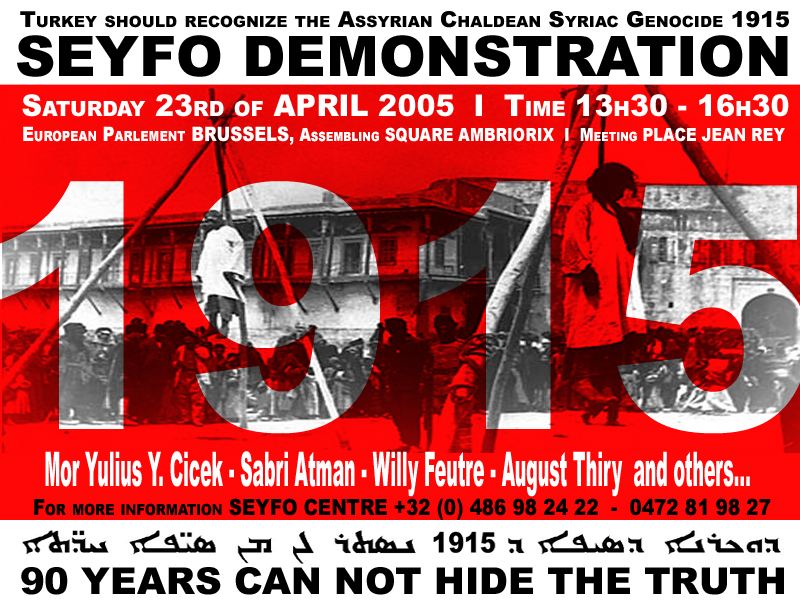


 Bishop Sarhad and others take pride in the fact that Chaldeans represent 75 to 80 percent of the Christian population in Iraq but they do not want to explain how it happened. They also don’t want to mention.the role of the Vatican, its missionaries, the diplomatic and financial help from the French government which forced the other two Christian denominations into submission by enticing or forcing their members to join the Chaldean church.
Bishop Sarhad and others take pride in the fact that Chaldeans represent 75 to 80 percent of the Christian population in Iraq but they do not want to explain how it happened. They also don’t want to mention.the role of the Vatican, its missionaries, the diplomatic and financial help from the French government which forced the other two Christian denominations into submission by enticing or forcing their members to join the Chaldean church.